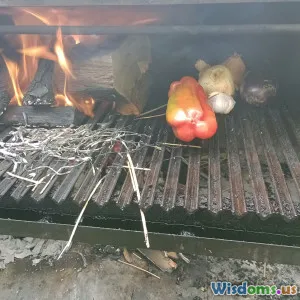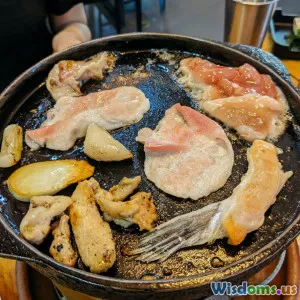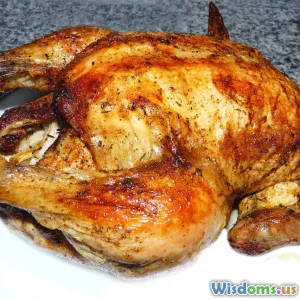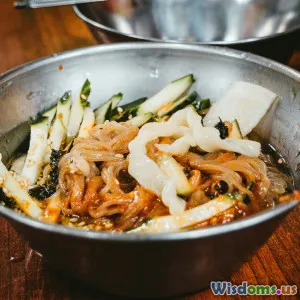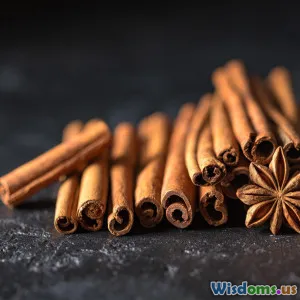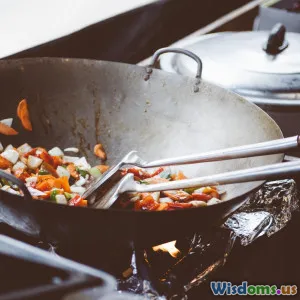
Sautéing Versus Stir Frying What You Need to Know
17 min read Discover the key differences between sautéing and stir frying, including techniques, cookware, and tips for delicious results. (0 Reviews)
Sautéing Versus Stir Frying: What You Need to Know
Few kitchen techniques pack as much flavor and versatility as sautéing and stir frying. Often used interchangeably, these methods have distinct origins, tools, and culinary roles. If you want to maximize taste, texture, and your time in the kitchen, understanding the differences – and when to use each – can transform your cooking. Let’s break down what separates sautéing from stir frying, how each is best applied, and professional tips for home chefs who demand excellence in every bite.
The Fundamentals of Sautéing

Sautéing is a classic French cooking technique. Its name comes from the French word sauter, meaning "to jump"—a nod to the way ingredients bounce around the pan during cooking. Sautéing uses a small amount of fat and relatively high heat, but not as intense as stir frying. The objective is to cook food swiftly while coaxing out flavors, not to steam or deeply brown the ingredients.
The Tools: Choosing Your Pan Right
- Sauté Pan: Designed with straight, high sides and a flat bottom, sauté pans contain ingredients efficiently and retain just enough moisture. They offer more surface area than standard frying pans—making it easier to avoid overcrowding.
- Common Materials: Stainless steel is valued for even heat, though non-stick pans are popular for ease.
Ingredients That Shine When Sautéed
- Thin cuts of meat (think chicken breast, pork medallions)
- Vegetables like mushrooms, onions, peppers, and asparagus
- Small seafood items such as shrimp or scallops
Pro Tip: Sautéing is ideal when you want your ingredients lightly browned, tender, but never soggy.
A Sautéed Dish Example
Classic chicken piccata starts with thin chicken cutlets, dredged lightly in flour, then sautéed in butter or olive oil for just a couple minutes per side. The quick sear locks in juiciness before they're glazed in a zingy lemon and caper sauce.
The Fast-Paced World of Stir Frying

Stir frying is the heartbeat of many East and Southeast Asian cuisines. This technique is characterized by ultra-high heat and constant movement, typically in a wok. Foods cook hot and fast—often in under five minutes—retaining crisp textures and vibrant colors.
Stir Fry Tools: The Wok is Essential
- Wok Construction: Deep, rounded bottoms (to feed the flame), and tall, sloping sides allow you to toss ingredients with ease and expose them to high heat only temporarily.
- Home Adaptations: While traditional woks thrive on gas burners, flat-bottomed woks are now created for electric or induction ranges.
Typical Stir Fry Ingredients
- Proteins: Thinly sliced beef, chicken, tofu, or shrimp
- Vegetables: Bell peppers, snap peas, broccoli, bok choy, and carrots, all cut into uniform chunks for quick, even cooking
- Aromatic foundations: Garlic, ginger, scallions, chilies
Example: A classic beef and broccoli stir fry depends on scorching heat and a flask of oil to sear beef strips, followed quickly by vegetables and a savory soy-based sauce.
Technique Showdown: Method and Motion

Understanding how sautéing and stir frying move food through the pan is central to mastering both methods.
Motion Matters
- Sautéing: Uses shorter "flip and slide" gestures. Cooks quickly stir or toss the pan so small pieces of food make contact with the hot surface, encouraging rapid evaporation and browning.
- Stir Frying: Relies on almost constant movement. Wok spatulas or chuan (Chinese spatulas) are frequently used; ingredients are tossed, folded, and stirred to ensure nothing overcooks or burns.
Heat and Time: Tuning Temperatures for Flavor
Sautéing takes place on medium-high heat, creating gradual, even browning—protecting delicate ingredients. Stir frying, however, demands the highest heat your stove can muster (woks may reach 700°F in restaurants), ensuring that food gets cooked nearly instantly but doesn't soften into mush.
Preventing Overcrowding
In both methods, overcrowding spells doom. Too many ingredients cool the pan’s surface, causing steam rather than a flavorful sear. For home cooks, it’s often best to work in batches, especially with proteins or high-moisture vegetables.
Fats and Flavors: Oils Make the Difference

Not all cooking oils are created equal—especially when high heat is involved.
Sautéing
- Popular Oils: Olive oil, clarified butter (ghee), or even neutral oils such as canola.
- Why? They have moderate to high smoke points but often bring subtle flavor to the dish, such as nutty browned butter.
Stir Frying
- Preferred Oils: Peanut oil, sunflower oil, grapeseed oil—chosen for high smoke points (typically 450°F or above) and neutral taste.
- Special Finishes: Aromatic oils (like toasted sesame oil or chili oil) are sometimes added after the main stir fry process, for punchy finishing notes.
Fact: Adding minced garlic or ginger to cold oil before heating can extract their essence gently, but high heat will quickly scorch them. For stir fries, add garlic after the wok and oil are hot—toss only for seconds.
The Science of Texture: Crunch Versus Tenderness

Sautéing and stir frying result in distinctly different mouthfeel.
Sautéing
Food becomes tender and lightly golden, with moisture preserved. Sautéed onions, for example, soften into a sweet, aromatic base—a far cry from crisp.
Stir Frying
Retains a snap—especially in vegetables. The blazing heat cooks ingredients well before they lose their structural bite. This unique texture, called “wok hei” (the ‘breath of the wok’), is revered in Cantonese cuisine for its smoky sear.
Texture Tips
- Prepping: Cut vegetables for stir fry larger or on a diagonal to maximize surface area; slice proteins thin to cook fast.
- For Sautéing: Pat proteins dry for the best browning. Moisture blocks caramelization.
Sauce Sensibility: Timing and Technique

Both methods employ sauces, but when and how they are added can make or break a dish.
Sautéing Sauces
Usually, sauces are created in the pan after proteins or vegetables are removed. Classic method: deglazing. Wine, stock, or citrus juice are added to "lift" fond (browned bits) off the pan, then reduced with aromatics and finishing butter or cream.
Example: After sautéing scallops, a splash of white wine and lemon is reduced, with parsley stirred in at the end.
Stir Fry Sauces
Most stir fry sauces incorporate soy sauce, vinegar, sweeteners, or even thickening agents like cornstarch. Crucially, they're cooked in the last moments of high heat, thickening as they cling to the ingredients.
Example: For a chicken and cashew stir fry, a quick blend of soy sauce, rice wine, sugar, and cornstarch is poured into the wok seconds before serving.
Flavor Development: Browning and the Maillard Reaction

Both techniques rely on surface browning, but the browning can develop differently.
Sautéing
Lower heat and a less extreme rush to cook means more time for the Maillard reaction (complex browning), creating layers of nutty, savory flavor.
- Chicken or mushrooms sautéed to golden brown gain a rich, satisfying depth.
Stir Frying
While very high heat produces some browning, it's limited by time and ingredient movement. Instead, stir fries may gain charred edges or smoky essence—especially if a wok is used over flames—delivering a different but equally prized spectrum of flavors.
Cultural Heritage and Cuisine Impact

Exploring these techniques opens a window to the world’s table:
The French Connection
Sautéing birthed classic dishes like ratatouille, chicken marsala, and veal piccata—synonymous with European refinement and balance. Sauces are typically integral, and meals are often layered (proteins atop vegetables, bathed in pan sauce).
The Stir Fry Revolution
Chinese cooks popularized the wok 2,000 years ago, evolving dishes like chow mein and kung pao chicken, and giving rise to countless regional variations. Stir frying reflects the Chinese culinary ethos: speed, variety, and efficiency—preserving nutrition and maximizing flavor with minimal fuel.
In recent decades, American and global kitchens have eagerly adopted both methods, merging traditions and sparking new creative dishes.
Health and Nutrition Considerations

Every technique’s health impact depends on its ingredients and proportions, but both offer advantages for the mindful eater.
- Sautéing uses moderate oil amounts and favors lean cuts of meat, supplying nutrient-preserving, vegetable-friendly methods that avoid excessive fat or breading.
- Stir Frying excels at nutrient retention due to cooking speed, and the method encourages more vegetables by volume.
Tip: Use minimal, high-flavor oils, and pack the pan with vegetables—both ways. Opt for low-sodium sauces in stir fries, and limit fatty or creamy additions in pan sauces.
Troubleshooting: Getting the Most From Each Method

If sautéed or stir-fried meals occasionally flop, common pitfalls include:
Overcrowding the Pan
Too much food results in steaming. Sauté or stir fry in smaller batches; combine at the end.
Wrong Heat Level
Sautéing on low won’t brown ingredients; stir frying on weak flame creates limp results. Preheat thoroughly before adding oil.
Sauce Blues
Dumping sauce too soon (especially in stir fries) causes steaming and dilutes flavors. Time sauce addition to the last minute.
Prep Issues
Irregularly cut ingredients cook at uneven rates. For both methods, consistency is key: slice and dice everything evenly!
Expert Tips for Success

- Use a splatter guard: For sautéing, especially with proteins, this can reduce oil spots.
- Work with a dry pan and dry ingredients: Moisture ruins browning in both methods.
- Keep tools ready: For stir frying, have sauces and aromatics prepped—once the heat goes on, timing is critical.
- Pre-heat your pan: In both cases, a cold pan torpedoes success. You should hear a lively sizzle when food hits the fat.
- Don’t forget seasoning: Lightly salt early, and taste again at the end; a flake of finishing salt or dash of vinegar at the last step sharpens flavor.
When to Pick Sautéing or Stir Frying

Choose Sautéing when:
- You want a classic, European touch—delicate sauces, tender textures, or layered flavors.
- Preparing thinner cuts or seafood that need gentle handling.
Opt for Stir Frying if:
- You desire vibrant, quick-cooked vegetables and an Asian-inspired flavor profile.
- You’re seeking a one-pan meal bursting with bright, fresh notes, and minimal fuss.
For the ambitious cook, mastering both methods vastly expands what your kitchen can offer. If a dish needs deep, savory richness and silky pan sauce, sauté. If you crave colorful veggies with crisp-tender bite in a flash, break out the wok (or frying pan in a pinch) for a modern stir fry.
Unleashing the full potential of layout, heat, fat, and movement elevates even everyday ingredients. The next time you’re hungry and staring at a pile of vegetables or a package of lean meat, think about which technique best matches your vision—and enjoy the sizzle, the aroma, and the taste every time.
Rate the Post
User Reviews
Other posts in Basic Cooking Techniques
Popular Posts










